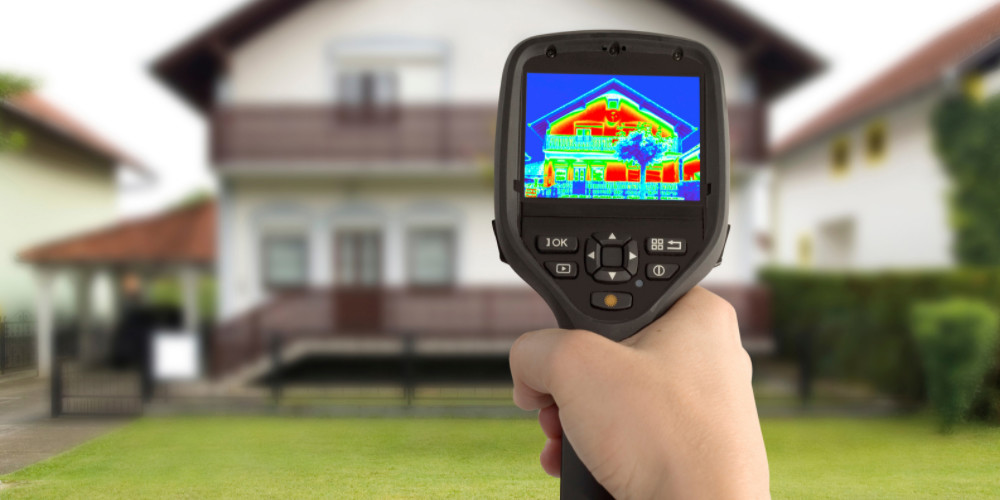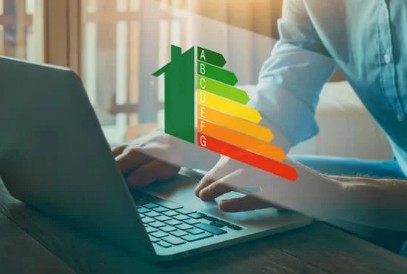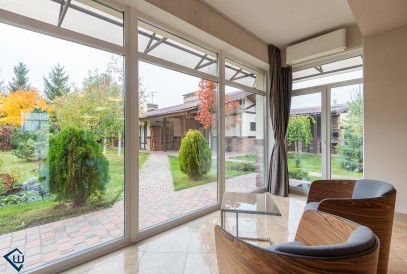Thermal transmittance of windows: what is it, why is it important and how is it calculated?
My name is
Elia Caneppele from Windowo and today I will talk to you about the important concept of
thermal transmittance windows .
In order not to waste time, I will start immediately by listing the fundamental concepts of
window transmittance:
- The degree of thermal insulation offered by a window or door is expressed through a coefficient called thermal transmittance ;
- The transmittance is influenced by the type of glass , by the material of which the frame and the section of the window itself is made and finally by the quality and thickness of the gaskets used;
- The lower the thermal transmittance coefficient, the better the performance of the window;
- Good thermal insulation means savings on heating and maintenance costs of the systems, greater and better control of the internal temperature of the building, reduction of condensation, cold near the windows and environmental protection .
Now that we have immediately seen the most important things, let's go together to see the different aspects of the thermal transmittance of the fixtures in more detail.

Why is the thermal transmittance of windows important?
But why is this such an important concept? Isn't it enough to get advice from an expert dealer to change the fixtures? In reality, to make an
informed choice you should first know what the
thermal transmittance of the fixtures is and be able to perform the
calculation of the transmittance .
In fact, maintaining a balance in the temperature of a building is perhaps the first objective of a
window system , together with the control of light and the passage of air.
For example, if you choose aluminum frames, I strongly recommend that they are
thermal break frames . Otherwise you will have large heat losses. Glass also plays an essential role with respect to heat dispersion, so it would be advisable to equip your windows with low-emission glass. Finally, I recommend the
insulation of roller shutter boxes to avoid energy waste at home.
Returning to the main topic of this article, the relationship between thermal insulation and improvement of home energy efficiency is expressed in:
- Less intensive use of heating and cooling systems;
- Less temperature changes between different environments;
- Elimination of humidity and condensation (including mold);
- Reduction of the costs of energy bills.
Therefore, having a good thermal insulation inside a home allows to decrease the heating requirement, increases the internal comfort and leads to an economic benefit. Energy consumption can be reduced by up to 70-80% by insulating external walls and roofs.
How to define the correct transmittance value for your home
Warning:
not all houses are the same ! The thermal transmittance of the windows guarantees high domestic comfort, but must be adapted to the climatic characteristics of the house in question.
The variables of each individual case will establish the parameters. In this sense, the
advice of an expert technician is essential, since an incorrect assessment could not guarantee the necessary thermal performance.
Furthermore, according to the law, it is not possible to install windows with thermal transmittance lower than a certain value. This limit is given by the climatic zone where the house is located.
The definition of thermal transmittance
Thermal transmittance is the quantity that indicates the quantity of
thermal power exchanged by a material per unit of surface and difference in temperature.
More simply we can define the thermal transmittance as the
average of the heat flow that passes for each square meter of two environments with different temperatures (for example the outside and any heated environment, or two differently heated spaces).
In even simpler words, for us the thermal transmittance fixtures calculates the amount of heat that passes through a window or door.
The formula of thermal transmittance
The symbol with which it is indicated is: U.
The
measurement of transmittance is
W / (m2K) : this is an essential international unit of measurement in construction since, to maximize energy savings, it is necessary to use materials with a low thermal transmittance value. This applies to both entire buildings and individual windows.
- W : stands for Watt;
- m2 : stands for square meters;
- K : stands for degrees Kelvin.
There are, however, different types of thermal transmittance linked to the field of windows, each with its own abbreviation:
- Uw : it relates to the thermal transmittance of the window as a whole;
- Ug : is the transmittance relative to the glass alone;
- Uf : is the transmittance of the perimeter profile of the window only;
- Psi : is the perimeter transmittance of the glass channel.
How is the value of U calculated?
The smaller the U value, the smaller the amount of energy dispersed by the building element. And then the thermal insulation will be better.
Generally insulating materials all have a thermal conductivity of less than 0.1 W / mK. Thermal conductivity (λ) is precisely the ability of a material to conduct heat.
The value of U is obtained by calculating the inverse of the total resistance RT.
To calculate the thermal resistance of the passage of heat of a layer of homogeneous material, the thickness of the layer (in meters) is divided by the thermal conductivity value of the material. Hence: R = s / λ in m2K / W.
Therefore the total resistance is equal to the sum of the internal and external surface thermal resistances.
I emphasize that only the resistance values can be added together. To obtain an identical U-value for materials with different thermal conductivity, the thickness of the material will have to change.
Calculation of Uw transmittance windows
Fortunately, the value that interests us most is only the
thermal transmittance value of the window , that is the Uw window transmittance (w stands for window).
Uw = AgUg + AfUf + lgΨg / Ag + Af
Where Ag is the area of the glass, Ug refers to the U-value of the central area of the glazing, Af is the area of the frame and Uf is the U-value of the frame.
lg is the perimeter of the glass and Ψg is the linear thermal transmittance referred to the combination of frames, glasses and spacers.
In other words, the calculation of the transmittance of the window is obtained as follows: transmittance of the profile for the surface of the same, plus the transmittance of the glass for its surface, plus a coefficient Ψg, divided by the total surface of the window.
In this way you will be able to calculate the transmittance of the old frame and that of the new one with which you will replace it.
Window transmittance values: an example
I try to make it easier with a small example: let's
compare two different types of windows . The first has a thermal transmittance Uw of 1.20 W / (m2K). The second has a Uw value of 1.50 W / (m2K).
We already know that the lower the numerical value for windows transmittance, the higher the insulation value will be.
If we want to have a high thermal insulation we will choose the first window, with Uw window transmittance value equal to 1.20 W / (m2K). Attention: even a few decimals can make the difference!
Thermal transmittance windows and window construction material
For windows and French windows, the window transmittance value represents the average between:
- frame thermal transmittance (Uf);
- glass thermal transmittance (Ug);
- linear thermal transmittance (Ψg), given by the interaction between the two and the spacer.
The window thermal transmittance parameter obviously also depends on the
material used for the construction (
windows in PVC , wood, aluminum with thermal break).
Furthermore, the
glass transmittance value also influences the overall values of the thermal transmittance of the fixtures.
In a nutshell, the insulating power of double glazing is given by:
- low-emission glass coatings (Argon, Krypton and Xenon);
- the gas filling the chambers.
Uw transmittance fixtures and tax breaks
The purchase of new windows can be included in various tax incentives, including the famous
Ecobonus 110% and the Facades Bonus for the costs of the restoration work. In this sense, the thermal transmittance of fixtures plays a fundamental role because it changes the
energy profile of a house .
Furthermore, knowing in which
climatic zone we live is essential for choosing windows. There are six climatic zones in Italy: from A to F. Any renovation or replacement of fixtures must take these technical requirements into account.
In the Legislative Decree 192/2005 the limits of transmittance windows allowed to have access to tax incentives are reported. Any regional or municipal regulations are also important.
I hope this article on thermal transmittance fixtures was helpful to you. Keep following Windowo's blog for other content related to the world of windows.



